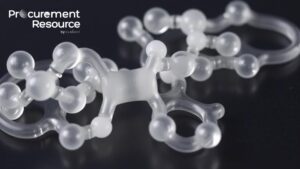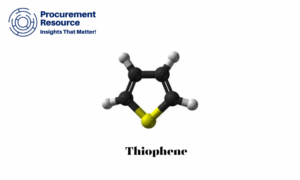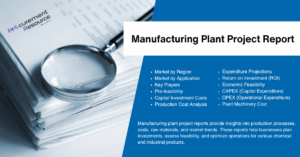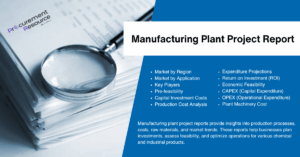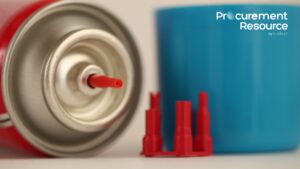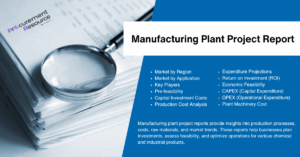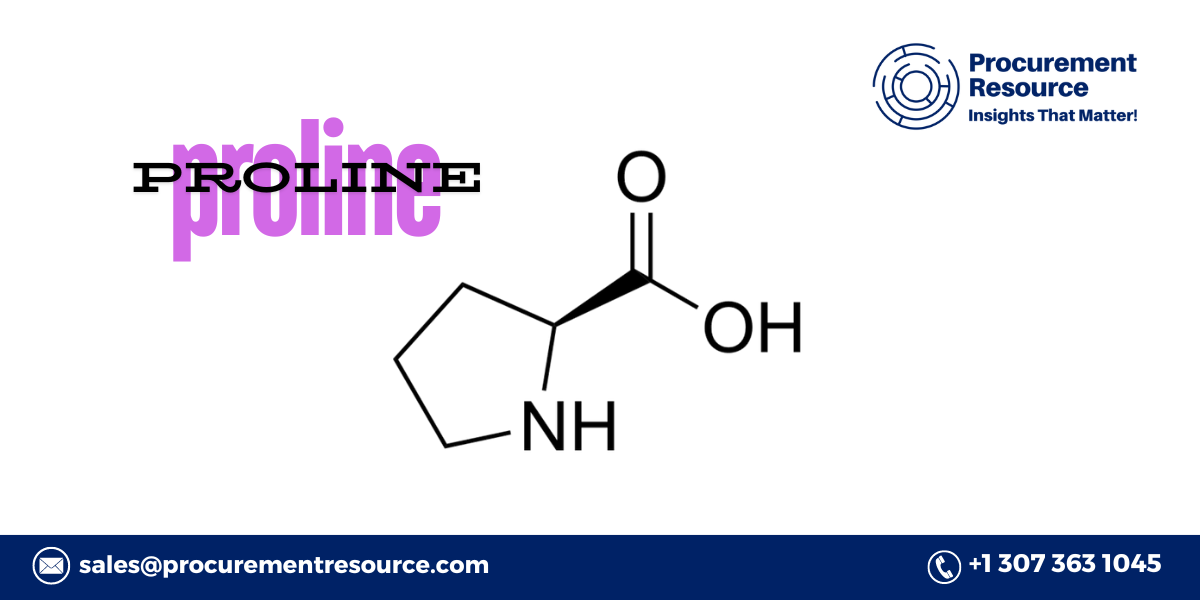
Proline Production Cost Analysis
Proline is an amino acid that plays a critical role in the biosynthesis of proteins. It is unique among the standard amino acids due to its cyclic structure, which contributes to its distinctive physical and chemical properties. Proline is widely used in various industries, including pharmaceuticals, food and beverages, cosmetics, and animal feed. Understanding the proline production cost analysis is essential for manufacturers, investors, and stakeholders involved in its production and application. This article provides an in-depth analysis of the factors influencing proline production costs, historical trends, and future projections.
1. Overview of Proline
Proline is one of the 20 standard amino acids used by cells to synthesize proteins. Unlike most amino acids, which have a linear chain structure, proline has a cyclic structure, which gives it unique properties. This cyclic structure restricts the flexibility of proline in protein chains, which can significantly affect the structure and function of proteins in which it is incorporated.Applications of Proline
- Pharmaceuticals: Proline is used in the synthesis of various pharmaceuticals, including peptide-based drugs and as a chiral building block in organic synthesis.
- Food and Beverages: It is used as a flavor enhancer and as a component of protein supplements and energy drinks.
- Cosmetics: Proline is included in anti-aging products and skin care formulations due to its role in collagen synthesis.
- Animal Feed: Proline is added to animal feed to promote growth and improve feed efficiency, particularly in poultry and swine.
2. Factors Influencing Proline Production Costs
The production cost of proline is influenced by several factors, including raw material costs, production processes, technological advancements, labor, energy, and regulatory compliance. Understanding these factors is crucial for assessing the economic viability of proline production and predicting future cost trends.2.1 Raw Material Costs
The primary raw materials for producing proline include glucose or other carbohydrate sources, ammonia or ammonium salts, and specific strains of microorganisms or enzymes. The cost of these raw materials can significantly impact the overall production cost of proline.- Glucose: Glucose is a common carbon source used in microbial fermentation processes to produce proline. The price of glucose, derived from sources such as corn or sugarcane, can fluctuate based on agricultural yields, market demand, and global commodity prices.
- Ammonia/Ammonium Salts: Ammonia or ammonium salts serve as nitrogen sources in the fermentation process. The cost of ammonia is closely tied to natural gas prices, as it is produced through the Haber-Bosch process, which consumes significant amounts of natural gas.
- Microorganisms/Enzymes: The cost of producing or purchasing specific strains of microorganisms or enzymes used in proline production can vary depending on the scale of production, the efficiency of the strain, and the licensing fees for proprietary technologies.
2.2 Production Processes
Proline can be produced through various methods, including chemical synthesis, enzymatic synthesis, and microbial fermentation. Each method has its own cost structure, which depends on factors such as process efficiency, yield, and scalability.- Chemical Synthesis: Proline can be synthesized chemically from pyrrolidine and an appropriate carboxylating agent. While chemical synthesis can be highly efficient, it often involves multiple steps, each requiring specific reagents and catalysts, which can drive up costs.
- Enzymatic Synthesis: This method involves the use of enzymes to catalyze the production of proline from precursor molecules. Enzymatic synthesis can be more selective and environmentally friendly than chemical synthesis, but it requires the production or purchase of expensive enzymes.
- Microbial Fermentation: Microbial fermentation is a common method for producing amino acids like proline. This process uses genetically engineered microorganisms to convert simple substrates, such as glucose and ammonia, into proline. Fermentation processes can be highly scalable, but they require significant investments in bioreactors, downstream processing, and purification.
2.3 Technological Advancements
Technological innovations play a crucial role in reducing the production cost of proline by improving process efficiency, yield, and scalability. Advances in biotechnology, such as metabolic engineering and synthetic biology, have led to the development of more efficient microbial strains and enzymes for proline production.- Metabolic Engineering: By modifying the metabolic pathways of microorganisms, metabolic engineering can increase the yield of proline by directing more metabolic flux towards its production. These modifications can also reduce by-product formation, further improving process efficiency.
- Synthetic Biology: Synthetic biology techniques, such as gene editing and pathway optimization, allow for the creation of custom microbial strains designed specifically for high-yield proline production. These techniques can also enable the use of alternative, cheaper substrates, reducing raw material costs.
- Process Optimization: Innovations in process optimization, such as continuous fermentation, real-time monitoring, and automation, can improve the overall efficiency and scalability of proline production, reducing labor and energy costs.
2.4 Energy Costs
Energy consumption is a significant factor in the production cost of proline, particularly in processes that require heating, cooling, agitation, or drying. The cost of energy, including electricity, natural gas, and steam, can vary depending on the location of the production facility, local energy prices, and the efficiency of the production process.- Electricity Costs: Electricity is required for powering bioreactors, pumps, mixers, and other equipment used in the production process. Fluctuations in electricity prices can have a direct impact on production costs, particularly in regions with high energy costs.
- Heating and Cooling: Certain stages of proline production, such as fermentation and purification, may require precise temperature control. The cost of heating and cooling, particularly in large-scale operations, can significantly contribute to overall production costs.
- Process Efficiency: The energy efficiency of the production process, including the design of bioreactors, heat exchangers, and purification systems, plays a crucial role in minimizing energy consumption and reducing costs.
2.5 Labor Costs
Labor costs are another important factor in the production cost of proline. The cost of labor can vary significantly depending on the location of the production facility, the availability of skilled workers, and local labor laws.- Wages: Higher wages in developed countries can lead to increased production costs compared to developing countries, where labor is generally less expensive. However, the availability of skilled labor and the complexity of the production process can also impact labor costs.
- Labor Efficiency: The efficiency and productivity of the workforce play a crucial role in determining production costs. More efficient operations with skilled labor can reduce costs by improving productivity and reducing downtime.
2.6 Regulatory and Environmental Compliance
Compliance with regulatory and environmental standards can impact the production cost of proline, particularly in regions with stringent regulations on emissions, waste management, and safety.- Environmental Regulations: Regulations related to emissions, waste disposal, and water usage can increase production costs by requiring additional investments in pollution control, waste treatment, and resource management.
- Quality Standards: Compliance with quality standards, such as Good Manufacturing Practices (GMP) for pharmaceuticals and food-grade certifications, can also add to the cost of producing proline. These standards may require additional testing, documentation, and quality control measures.
3. Historical Trends in Proline Production Costs
Over the past few decades, proline production costs have been influenced by changes in raw material prices, technological advancements, labor costs, and regulatory developments. Understanding these historical trends provides insight into the factors driving current and future costs.3.1 Pre-2000 Stability
Before 2000, proline production costs were relatively stable, with moderate fluctuations driven by changes in raw material prices and labor costs. The production of proline during this period was primarily through chemical synthesis, which was well-established and relatively cost-effective for small-scale production.- Chemical Synthesis Dominance: Chemical synthesis was the primary method for producing proline, particularly for pharmaceutical and industrial applications. The costs associated with chemical synthesis were relatively stable, influenced mainly by the prices of raw materials and reagents.
- Limited Technological Advancements: Technological advancements in proline production were limited during this period, with most innovations focused on improving the efficiency of chemical synthesis processes.
3.2 2000-2015 Volatility
The period from 2000 to 2015 witnessed increased volatility in proline production costs, driven by several factors, including fluctuations in raw material prices, the rise of microbial fermentation, and increased regulatory scrutiny.- Rising Raw Material Costs: The prices of key raw materials, such as glucose and ammonia, saw significant fluctuations during this period, influenced by global commodity markets and environmental conditions. These fluctuations impacted the cost of producing proline, particularly in fermentation-based processes.
- Emergence of Fermentation Processes: The early 2000s saw the rise of microbial fermentation as a viable method for producing proline. While fermentation offered several advantages, including scalability and sustainability, the initial costs associated with developing and optimizing fermentation processes were high.
- Regulatory Pressure: Increased regulatory scrutiny, particularly in the pharmaceutical and food industries, led to higher compliance costs. These costs included investments in quality control, environmental management, and process validation, which added to the overall cost of proline production.
3.3 Post-2015 Trends
Since 2015, proline production costs have continued to fluctuate, driven by ongoing changes in raw material prices, technological advancements, and regulatory developments. However, the adoption of new technologies and process optimization strategies has helped stabilize costs in recent years.- Technological Advancements: Advances in metabolic engineering, synthetic biology, and process optimization have led to more efficient production processes, reducing the overall cost of proline production. These technologies have enabled higher yields, lower energy consumption, and reduced waste, contributing to cost savings.
- Raw Material Price Stabilization: While raw material prices continue to fluctuate, the development of more resilient supply chains and the use of alternative substrates have helped stabilize costs. Additionally, the increased use of renewable resources in proline production has reduced reliance on traditional, volatile raw materials.
- Sustainability Initiatives: The growing emphasis on sustainability has led to the adoption of more environmentally friendly production practices, such as the use of renewable energy and the recycling of waste products. These initiatives have helped reduce the environmental impact of proline production while also contributing to cost savings.
4. Proline Production Cost Forecast: 2024-2032
Forecasting proline production costs involves analyzing various factors, including raw material prices, technological advancements, global demand, and regulatory developments. The following sections provide an outlook for proline production costs over the next decade.4.1 Short-Term Forecast (2024-2025)
In the short term, proline production costs are expected to remain relatively stable, with moderate increases driven by fluctuations in raw material prices and potential supply chain disruptions. The ongoing recovery from the COVID-19 pandemic is likely to stabilize market conditions, but uncertainties related to global trade and energy prices remain key risk factors.- Raw Material Costs: The prices of glucose, ammonia, and other key raw materials are expected to remain stable, with minor fluctuations reflecting global commodity price trends. Any significant changes in these markets could impact production costs, particularly for fermentation-based processes.
- Technological Advancements: Continued advancements in metabolic engineering and process optimization are expected to improve the efficiency of proline production, helping to offset potential increases in raw material and labor costs.
- Regulatory Impact: Compliance with environmental and quality regulations is expected to remain a significant cost driver, particularly in regions with stringent standards. However, the adoption of more sustainable practices and technologies may help mitigate these costs.
4.2 Medium-Term Forecast (2026-2028)
In the medium term, proline production costs are expected to face upward pressure due to several factors, including increasing global demand, potential supply constraints, and rising energy costs.- Global Demand Growth: The demand for proline is expected to grow steadily, driven by expanding applications in pharmaceuticals, food and beverages, and cosmetics. Emerging markets, in particular, are expected to drive demand growth, which may lead to supply constraints and higher production costs.
- Energy Costs: Rising energy costs, particularly in regions dependent on fossil fuels, may increase the cost of production, particularly in energy-intensive processes such as fermentation and drying. The adoption of renewable energy sources and energy-efficient technologies may help mitigate these costs.
- Supply Chain Resilience: The resilience of global supply chains will play a crucial role in determining production costs. Disruptions in the supply of key raw materials or components, whether due to geopolitical events, natural disasters, or trade restrictions, could lead to cost increases.
4.3 Long-Term Forecast (2029-2032)
Looking ahead to the long term, proline production costs are expected to continue their upward trajectory, albeit at a moderate pace. The growing emphasis on sustainability, coupled with advancements in biotechnology and process optimization, is likely to drive both demand and cost dynamics.- Sustainability Initiatives: As industries focus more on sustainability, there may be increased costs associated with implementing greener production practices, such as the use of renewable energy, sustainable raw materials, and waste reduction strategies. However, these initiatives may also lead to long-term cost savings and improved market positioning.
- Technological Innovations: Advances in synthetic biology, process automation, and real-time monitoring are expected to further improve the efficiency and scalability of proline production. These innovations may help offset rising costs and enable the production of proline at a lower cost per unit.
- Regulatory and Market Dynamics: The long-term outlook for proline production costs will be influenced by evolving regulatory frameworks, market dynamics, and consumer preferences. The adoption of new regulations, particularly related to environmental sustainability and product safety, could lead to increased compliance costs, but also create opportunities for differentiation and value creation.
5. Regional Analysis of Proline Production Costs
Proline production costs vary across different regions due to factors such as raw material availability, labor costs, energy prices, and regulatory environments. The following sections provide an overview of proline production cost trends in key regions.5.1 North America
In North America, proline production costs are influenced by high labor and energy costs, as well as the availability of advanced technologies and regulatory compliance requirements.- United States: The U.S. is a major producer and consumer of proline, particularly for pharmaceutical and industrial applications. Production costs in the U.S. are relatively high due to high labor wages, stringent environmental regulations, and high energy costs. However, the presence of advanced manufacturing infrastructure and access to cutting-edge technologies helps mitigate some of these costs.
- Canada: Canada’s proline production costs are generally lower than those in the U.S., but they are still influenced by similar factors, including labor and energy costs. The colder climate in Canada can also impact production costs, particularly for processes that require heating or temperature control.
5.2 Europe
Europe is a significant producer and consumer of proline, with major production centers in countries such as Germany, France, and the Netherlands. The region’s production costs are influenced by high labor costs, strict environmental regulations, and the availability of advanced technologies.- Germany: Germany is one of the largest producers of proline in Europe, with production costs influenced by high labor costs, stringent environmental regulations, and advanced manufacturing infrastructure. The country’s focus on sustainability and innovation has led to the adoption of more efficient and environmentally friendly production processes, which help offset some of the cost increases.
- France: France is another major producer of proline, particularly for the pharmaceutical and food industries. Production costs in France are influenced by high labor costs, energy prices, and regulatory compliance requirements. However, the country’s strong emphasis on quality and innovation helps maintain competitiveness in the global market.
5.3 Asia-Pacific
The Asia-Pacific region, particularly China and India, is a growing producer and consumer of proline. The region’s production costs are influenced by lower labor costs, access to raw materials, and expanding industrial capacity.- China: China is one of the largest producers of proline globally, with production costs influenced by lower labor costs, access to raw materials, and significant investments in industrial capacity. However, rising labor costs and increasing regulatory scrutiny are expected to drive up production costs in the coming years.
- India: India is an emerging producer of proline, with production costs influenced by lower labor costs and access to raw materials. The country’s growing pharmaceutical and food industries are expected to drive demand for proline, leading to potential supply constraints and higher production costs.
5.4 Latin America
In Latin America, proline production costs are influenced by regional economic conditions, labor availability, and environmental factors. The region’s growing population and increasing demand for pharmaceuticals and food products are expected to drive production costs.- Brazil: Brazil is a major producer and exporter of proline, particularly for the animal feed and food industries. Production costs in Brazil are influenced by relatively low labor costs and favorable growing conditions for raw materials. However, rising input costs and increasing environmental regulations are expected to impact production costs in the coming years.
- Argentina: Argentina’s proline production costs are influenced by high input costs and challenging economic conditions. The cost of raw materials, labor, and energy, as well as the need for improved infrastructure, are significant factors impacting production costs.
5.5 Middle East and Africa
The Middle East and Africa region is a growing market for proline, with increasing demand driven by rising incomes and the expansion of the pharmaceutical and food industries. Production costs in the region are influenced by labor availability, energy prices, and environmental factors.- Saudi Arabia: Saudi Arabia’s proline production costs are influenced by labor availability, energy prices, and regional economic conditions. The country’s focus on industrial diversification and investment in advanced manufacturing infrastructure is expected to drive growth in proline production.
- South Africa: South Africa is an emerging producer of proline, with production costs influenced by labor availability, land prices, and water scarcity. The cost of inputs and compliance with export standards are also significant factors impacting production costs.


